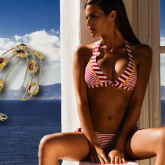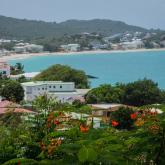
By Publisher Ray Carmen:
When former U.S. President Donald J. Trump launched his high-stakes tariff campaign between 2018 and 2021, the world braced for fallout. Steel, solar panels, aluminum, Chinese electronics — all swept up in the tariff tide. But in the Caribbean? The headlines skipped us. The policies weren’t aimed our way. So the question was whispered from Bridgetown to Basseterre: Will this hit us, too?
Turns out, the Caribbean may not have been the target — but it definitely got caught in the crossfire.
An Economy Built on Imports and Re-exports
Most Caribbean nations rely heavily on imported goods. Whether it’s kitchen appliances, solar panels, smartphones, or construction steel — chances are, it either comes from or through the United States. American ports, especially Miami, serve as logistical hubs for regional distribution.
Trump’s tariffs on Chinese goods drove up prices globally. Shipping companies adjusted. U.S. distributors passed costs downstream. For small island economies where every dollar counts and price shifts aren’t easily absorbed, it wasn’t long before businesses and consumers started to feel the squeeze.
“Our wholesale prices jumped 10–15% almost overnight,” said Denise Matthews, a retail supplier in Saint Lucia. “It wasn’t just China goods. Everything was touched. And when the ships came late, we had empty shelves.”
Construction, Energy, and Tourism: The Triple Hit
1. Building Costs Climbed
Tariffs on aluminum and steel triggered spikes in construction costs. For developing islands investing in infrastructure — hotels, schools, hospitals — those extra costs slowed down projects or forced contractors to buy lower-quality materials.
2. Solar Slowdowns
Tariffs on solar panels hit at a time when the Caribbean was pushing hard toward renewable energy. Islands like Barbados and Dominica were banking on solar for climate resilience. Suddenly, the price of clean energy systems rose, and small-scale installers struggled to keep momentum.
3. Tourism in the Crosshairs
While Trump’s tariffs didn’t directly hit tourism, the wider trade war strained U.S. consumers and sparked retaliatory taxes from other countries. Add the rising cost of flights, fuel, and imported luxuries, and tourism-dependent islands found themselves nervously watching booking numbers.
Did Any Good Come of It? Maybe. Necessity Breeds Strategy.
In adversity, some nations adapted. The price pinch prompted governments and businesses to diversify suppliers. Instead of relying solely on U.S. routes, countries started exploring options through Latin America, Europe, and intra-CARICOM trade.
“Trump didn’t just throw a rock in the pond — he forced us to think about resilience,” said Dr. Malcolm Pierre, an economist based in Trinidad. “We should’ve done that decades ago.”
The Final Sip
So yes — Trump’s tariffs affected the Caribbean. Not with the drama of a trade embargo, but with the quiet persistence of rising tides. The region wasn’t a player in the tariff war, but it ended up footing part of the bill. As the world continues to rethink trade in a post-pandemic, post-Trump era, the Caribbean carries one clear lesson:
Even when the giants fight among themselves, the waves reach the shore.




